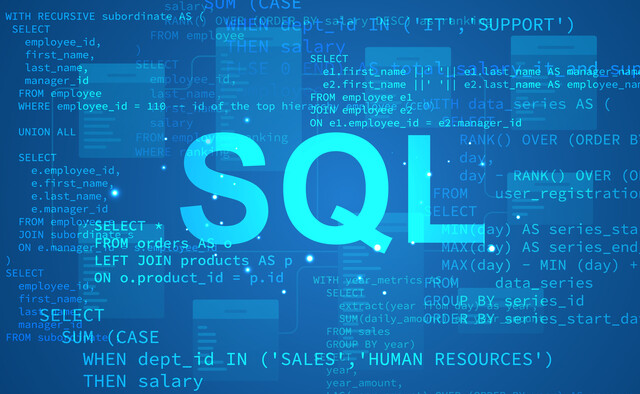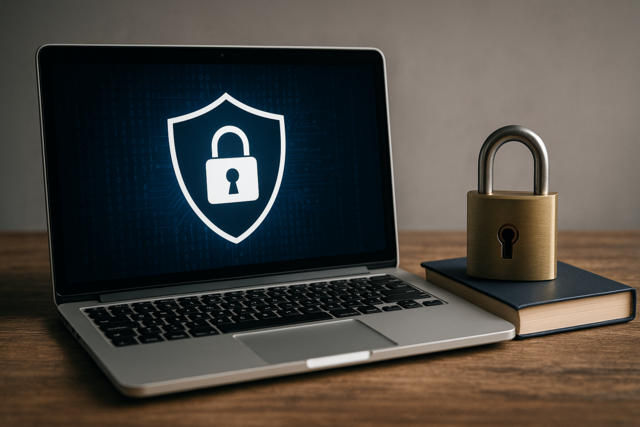Online Class: Cybersecurity 101

no certificate
with CEU Certificate*
-
15Lessons
-
27Exams &
Assignments -
5,231Students
have taken this course -
6Hours
average time -
0.6CEUs
Course Description
Cybersecurity Fundamentals: Safeguarding the Digital Frontier
In an era where the digital realm is deeply intertwined with our daily lives, the value of robust cybersecurity cannot be overstated. It stands as the fortress between our invaluable data and the incessant tide of cyber threats, ensuring the sanctity of our digital identities, assets, and the very fabric of our businesses. It's not just about defending from threats—it's about building a resilient, agile digital world.
Welcome to our comprehensive course on cybersecurity fundamentals—a meticulously designed portal to the world of digital safeguarding. Perfect for novices with an eagerness to delve into the realm of cybersecurity, this course offers a holistic exploration of the field, setting you on the path of becoming a sought-after professional in an ever-evolving industry.
Dive into a plethora of topics that will arm you with the knowledge you need:
- The Digital Blueprint: Understand the intricate hardware underpinning computer networks and the nuances of network design.
- Communication Codex: Master the essence of TCP/IP, get acquainted with common TCP protocols, and grasp the significance of port numbers.
- Wireless Wisdom: Equip yourself with best practices for securing wireless networks and ensuring the safety of remote users.
- Subnet Savvy: Demystify the realm of subnetting and the principles of network administration.
- Threat Landscape: From cyberattacks to wireless breaches, application onslaughts to injection attacks—know your enemy, their tactics, and their weaknesses.
- Social Engineering: Unmask the deceptive world of phishing and its kin, learning how to spot and stop these cunning threats.
- Test & Triumph: Understand the intricacies of penetration testing, vulnerability assessment, and refine your defense mechanisms.
- Crypto Corner: Embark on the cryptic journey of encryption and cryptography, the coded guardians of our data.
Unlike traditional courses, we ensure a seamless learning experience, free from the hassles of acquiring special software or equipment. While our primary objective isn't to prime you for specific certification exams, we lay a solid foundation upon which you can build, be it for further advanced studies or kickstarting a rewarding career in this crucial domain.
Enroll today and embark on a riveting journey to decipher, defend, and dominate the cyber realm. With every module, you'll be one step closer to becoming the vanguard of the digital world. Join us and be a beacon of security in the vast expanse of cyberspace.
- Completely Online
- Self-Paced
- Printable Lessons
- Full HD Video

- 6 Months to Complete
- 24/7 Availability
- Start Anytime
- PC & Mac Compatible
- Android & iOS Friendly
- Accredited CEUs

Course Lessons
Lesson 1. Navigating the World of Cyber Threats
As technology becomes an integral part of our lives, cybersecurity emerges as a pivotal discipline to protect sensitive information. This course is designed for novices interested in cybersecurity careers, covering threats and protective measures while setting the stage for more advanced studies.Lesson 2. Cybersecurity Fundamentals: Protecting Networks from Malicious Attacks
Network devices like routers and switches are vital for managing data routes and access within a network, employing strategies like MAC address recognition and traffic management. Basic configurations, such as setting passwords and understanding routing tables, are essential to protect against external threats.Lesson 3. Network Management Unveiled: An In-Depth Exploration
Port security, both physical and virtual, is essential to prevent unauthorized access by disabling unused ports and securing access points, ensuring only vetted connections can interact with the network. The 802.1X standard enhances this security by requiring device authentication to prevent rogue devices from connecting.Lesson 4. The Intricacies of TCP/IP Protocols and Wireless Network Protection
TCP/IP protocols, like TCP for reliable data transfer and IP for addressing, facilitate internet and private network communications. Static and dynamic IP addressing managed via DHCP maintains organized network systems.Lesson 5. Understanding Risk: Policies and Controls Essentials
Risk calculation methods such as MTTR, MTBF, SLE, and ALE enable organizations to quantify potential losses and downtime, guiding decisions on resource allocation and preventive measures. These metrics help in identifying acceptable risk levels and formulating effective response strategies.Lesson 6. Navigating the Challenges of Secure System Integration
Before data sharing with partners, delving into privacy implications is key--evaluating the nature of the data, ownership, and data backup responsibilities to prevent breaches and maintain compliance. Regular agreement reviews are essential to ensure legal compliance and prevent any vague terms that might lead to security vulnerabilities or disputes.Lesson 7. Essentials of Incident Handling and Digital Investigation
Forensics necessitates capturing digital evidence in the order of volatility to ensure its admissibility in court.Lesson 8. Cultivating Resilient Security: Understanding and Training for Modern Threats
Effective security measures require classifying data according to sensitivity (e.g., private, confidential) to control access and reinforce compliance with laws like HIPAA and PCI DSS. Proper data handling and disposal practices are critical to safeguarding against unauthorized disclosure and ensuring data destruction matches its classification level.Lesson 9. Malware: Unseen Software Threats
Malware encompasses diverse forms like spyware and rootkits, each aiming to infiltrate systems stealthily to gather data or cripple networks. In parallel, social engineering tactics such as phishing and tailgating manipulate human behavior to gain unauthorized access and information.Lesson 10. Cyber Attack Types and Prevention
Mitigation strategies such as log analysis, system hardening, and port security are essential to prevent and respond to various cyber threats.Lesson 11. Strengthening Network Defenses: Unveiling Vulnerabilities and Countermeasures
A vulnerability is a network's weak point that attackers can exploit, leading to data theft and operational disruptions. Understanding, identifying, and prioritizing these vulnerabilities with the aid of security assessment tools ensures a secure network environment.Lesson 12. Application Security Techniques
Network applications rely on a client-server setup to provide services, while application security is reinforced through methods like fuzzing and error handling. Regular updates and input validation are crucial to preventing threats such as cross-site scripting and request forgery.Lesson 13. Beyond Devices: The Essential Need for Data Security in Today's Digital Age
Protecting data requires more than conventional IT security; safeguarding data in motion requires encryption, while securing data at rest involves storing it separately and encrypting storage devices. Proper authentication, permissions control, and educating employees on risks associated with data at use enhance data protection methodologies.Lesson 14. Authentication and Access Services
The combination of authentication methods, such as those utilizing passwords, tokens, or biometric data, serves as a first line of defense against unauthorized network access, with systems like RADIUS facilitating secure remote connections. Additionally, access control mechanisms are implemented to meticulously dictate user interactions with resources, employing models like MAC or RBAC to reflect organizational structure and security priorities.Lesson 15. Mastering Encryption: An In-Depth Look at Modern Cryptographic Techniques
For data protection, asymmetric encryption uses pairs of cryptographic keys, allowing public sharing while keeping private keys secret, and symmetric encryption relies on a single key passed between parties. Methods like key escrow and recovery agents support data accessibility and prevent data loss.
Learning Outcomes
- Demonstrate understanding of various cyber-attack types by summarizing methods like malware, phishing, and SQL injection attacks.
- Identify common cyber threats and describe their characteristics, including cyber terrorism, cyber espionage, and cyber warfare.
- Demonstrate the ability to configure a firewall to allow or block specific network traffic based on set rules.
- Identify and describe the functions of switches, routers, proxies, and load balancers in network security environments.
- Configure rule-based management systems using 'if-then' conditions to control network access, ensuring protection against unauthorized traffic and potential threats.
- Define the key components of network administration in larger companies, including firewalls, routers, and switches, and explain their roles in network security.
- Define the process of the TCP three-way handshake used for establishing a reliable connection and explain its components, including connection establishment, data transmission, and connection termination.
- Identify and differentiate between IPv4 and IPv6 addresses, explaining their structure, length, and use in networking, including their representation and method of assignment.
- Define and differentiate among technical, management, operational, and administrative controls in risk mitigation scenarios.
- Evaluate risk calculation methods, including MTTR, MTBF, MTTF, SLE, ARO, and ALE, to determine the potential impact on network reliability.
- Identify appropriate policies, such as privacy, acceptable use, and security policies, to effectively reduce organizational risk.
- Demonstrate the process of securely onboarding and offboarding staff by implementing and evaluating company security protocols and access control measures.
- Identify and describe the steps involved in establishing agreements that define data sharing terms, responsibilities, and mitigation strategies to protect company privacy and maintain compliance.
- Demonstrate mastery of lesson content at levels of 70% or higher.
Additional Course Information

- Document Your Lifelong Learning Achievements
- Earn an Official Certificate Documenting Course Hours and CEUs
- Verify Your Certificate with a Unique Serial Number Online
- View and Share Your Certificate Online or Download/Print as PDF
- Display Your Certificate on Your Resume and Promote Your Achievements Using Social Media

Choose Your Subscription Plan
No Certificate / No CEUs
This course only
| Includes certificate | X |
| Includes CEUs | X |
| Self-paced |

|
| Instructor support |

|
| Time to complete | 6 months |
| No. of courses | 1 course |
Certificate & CEUs
This course only
| Includes certificate |

|
| Includes CEUs |

|
| Self-paced |

|
| Instructor support |

|
| Time to complete | 6 months |
| No. of courses | 1 course |
Certificates & CEUs
Includes all 600+ courses
| Includes certificate |

|
| Includes CEUs |

|
| Self-paced |

|
| Instructor support |

|
| Time to complete | 12 Months |
| No. of courses | 600+ |
Certificates & CEUs
Includes all 600+ courses
| Includes certificate |

|
| Includes CEUs |

|
| Self-paced |

|
| Instructor support |

|
| Time to complete | 24 Months |
| No. of courses | 600+ |
Student Testimonials
- "This course is fantastic! I learned a lot from it, although I know about computers, I was cybersecurity illiterate before this course." -- Gamal G.
- "This course was great. I liked the vocabulary. There were terms I have heard before but never really understood and this course clarified things for me." -- Sonny T.
- "This course has enlighten me to understand how important cyber security is, and all the pro's and con's that take part in being secure. I really enjoyed this course. Thank you." -- Phyllis J.
- "I thought the course was very informative. I learned a lot. Thank you!" -- Lisa K.
- "This course was very helpful. Learned a lot of things that I did not know." -- Cristina G.
- "A very good course overall. I knew a lot before the course but definitely learned some new stuff." -- Benny M.
- "As a beginner in this domain of activity, I found this course easy to understand and very helpful." -- Gabriel C.
- "I like the course. I have a better understanding of cyber security." -- Danil L.
- "i enjoyed this class very much." -- Cristina G.
Related Courses
-
 19 hours
1.9 CEUs
Ultimate Excel Training Bundle
+ More Info
19 hours
1.9 CEUs
Ultimate Excel Training Bundle
+ More Info
-
 11 hours
1.1 CEUs
Introduction to CSS
+ More Info
11 hours
1.1 CEUs
Introduction to CSS
+ More Info
-
 5 hours
0.5 CEUs
Developing Great Social Skills
+ More Info
5 hours
0.5 CEUs
Developing Great Social Skills
+ More Info
-
 20 hours
2.0 CEUs
Photoshop Elements 101
+ More Info
20 hours
2.0 CEUs
Photoshop Elements 101
+ More Info
-
 7 hours
0.7 CEUs
Google Slides
+ More Info
7 hours
0.7 CEUs
Google Slides
+ More Info
-
 4 hours
0.4 CEUs
OneNote for Windows
+ More Info
4 hours
0.4 CEUs
OneNote for Windows
+ More Info
-
 17 hours
1.7 CEUs
Introduction to SQL
+ More Info
17 hours
1.7 CEUs
Introduction to SQL
+ More Info
-
 8 hours
0.8 CEUs
MySQL
+ More Info
8 hours
0.8 CEUs
MySQL
+ More Info
-
 11 hours
1.1 CEUs
Business Administration 101
+ More Info
11 hours
1.1 CEUs
Business Administration 101
+ More Info
-
 7 hours
0.7 CEUs
Securing Your Data and Privacy
+ More Info
7 hours
0.7 CEUs
Securing Your Data and Privacy
+ More Info
-
 7 hours
0.7 CEUs
Lifetime Wellness 101
+ More Info
7 hours
0.7 CEUs
Lifetime Wellness 101
+ More Info
-
 5 hours
0.5 CEUs
Kaizen 101 - An Introduction
+ More Info
5 hours
0.5 CEUs
Kaizen 101 - An Introduction
+ More Info
-
 12 hours
1.2 CEUs
Adobe Photoshop
+ More Info
12 hours
1.2 CEUs
Adobe Photoshop
+ More Info
-
 7 hours
0.7 CEUs
Google Sheets
+ More Info
7 hours
0.7 CEUs
Google Sheets
+ More Info
-
 9 hours
0.9 CEUs
ESL Grammar Skills Level 5
+ More Info
9 hours
0.9 CEUs
ESL Grammar Skills Level 5
+ More Info
-
 5 hours
0.5 CEUs
Basic Parenting Skills
+ More Info
5 hours
0.5 CEUs
Basic Parenting Skills
+ More Info
-
 6 hours
0.6 CEUs
Google Docs
+ More Info
6 hours
0.6 CEUs
Google Docs
+ More Info
-
 3 hours
0.3 CEUs
Etiquette 101
+ More Info
3 hours
0.3 CEUs
Etiquette 101
+ More Info
-
 14 hours
1.4 CEUs
QuickBooks Online
+ More Info
14 hours
1.4 CEUs
QuickBooks Online
+ More Info
-
 8 hours
0.8 CEUs
Learn HTML - Create Webpages Using HTML5
+ More Info
8 hours
0.8 CEUs
Learn HTML - Create Webpages Using HTML5
+ More Info
-
 14 hours
1.4 CEUs
QuickBooks 101
+ More Info
14 hours
1.4 CEUs
QuickBooks 101
+ More Info



